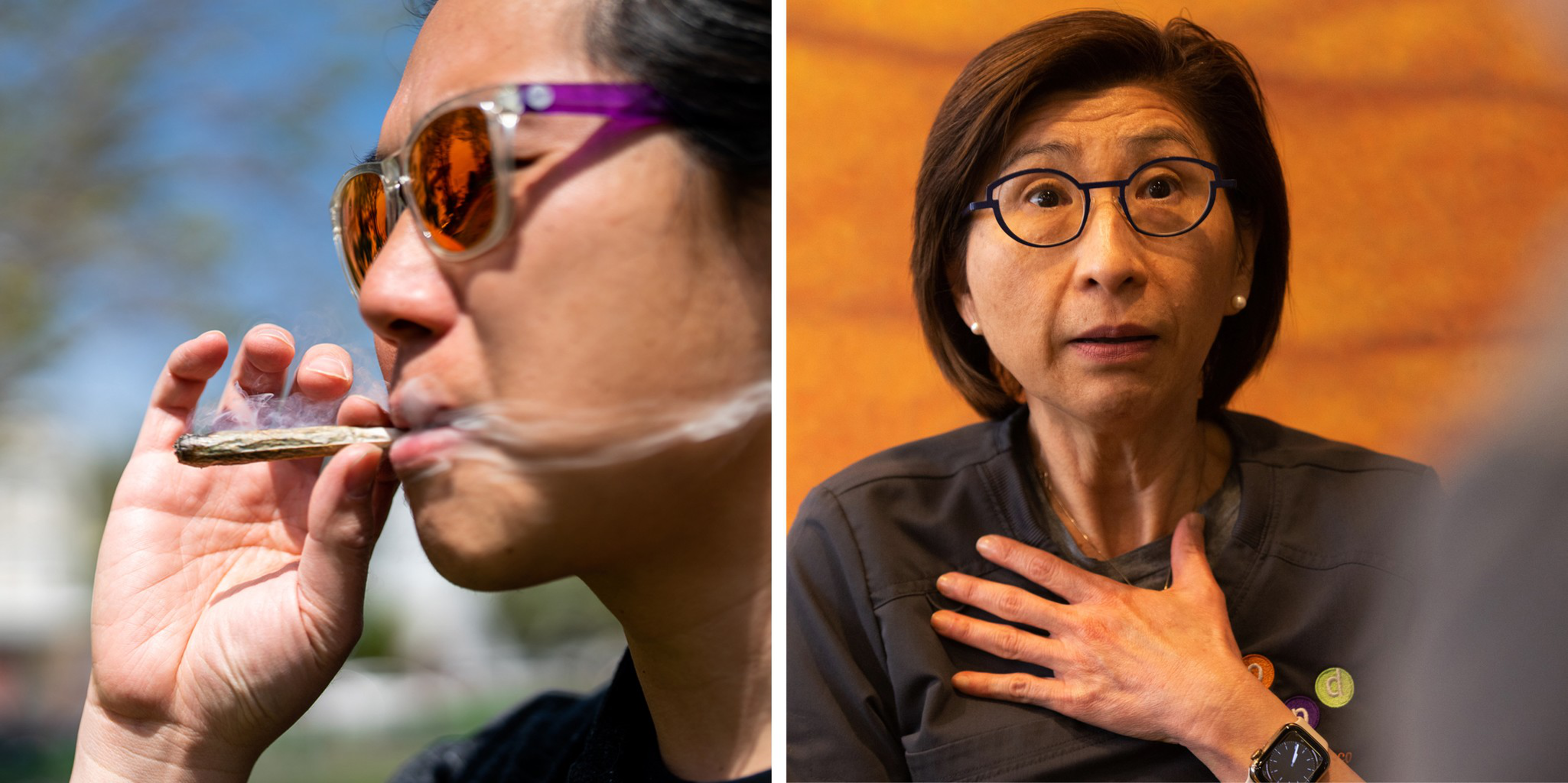“Pasta, not pot!” a cluster of protesters shouted outside of Gold Mirror, a decades-old Italian restaurant in San Francisco’s Sunset District, during one of many demonstrations in April. The Gold Mirror owners and a local dispensary had announced plans to open a cannabis shop on the restaurant’s upper level, prompting outcry from concerned community members.
With a bullhorn and signs in tow, the protesters demanded the neighborhood institution stick to serving pasta and cannoli.
Even by this city’s standards, the idea of a restaurant famous for its cannelloni installing a dispensary on its mezzanine level may be new—but the outpouring of community opposition is not.
San Francisco may be America’s most proudly stoned city, known all over the world for its counterculture and for its psychedelic- and weed-friendly residents. But its embrace of commercial marijuana faces staunch opposition from a relatively small but increasingly outspoken group of locals—especially in the Sunset, with its large Asian American population.
Indeed, many of the protesters chanting outside Gold Mirror were Chinese Americans.
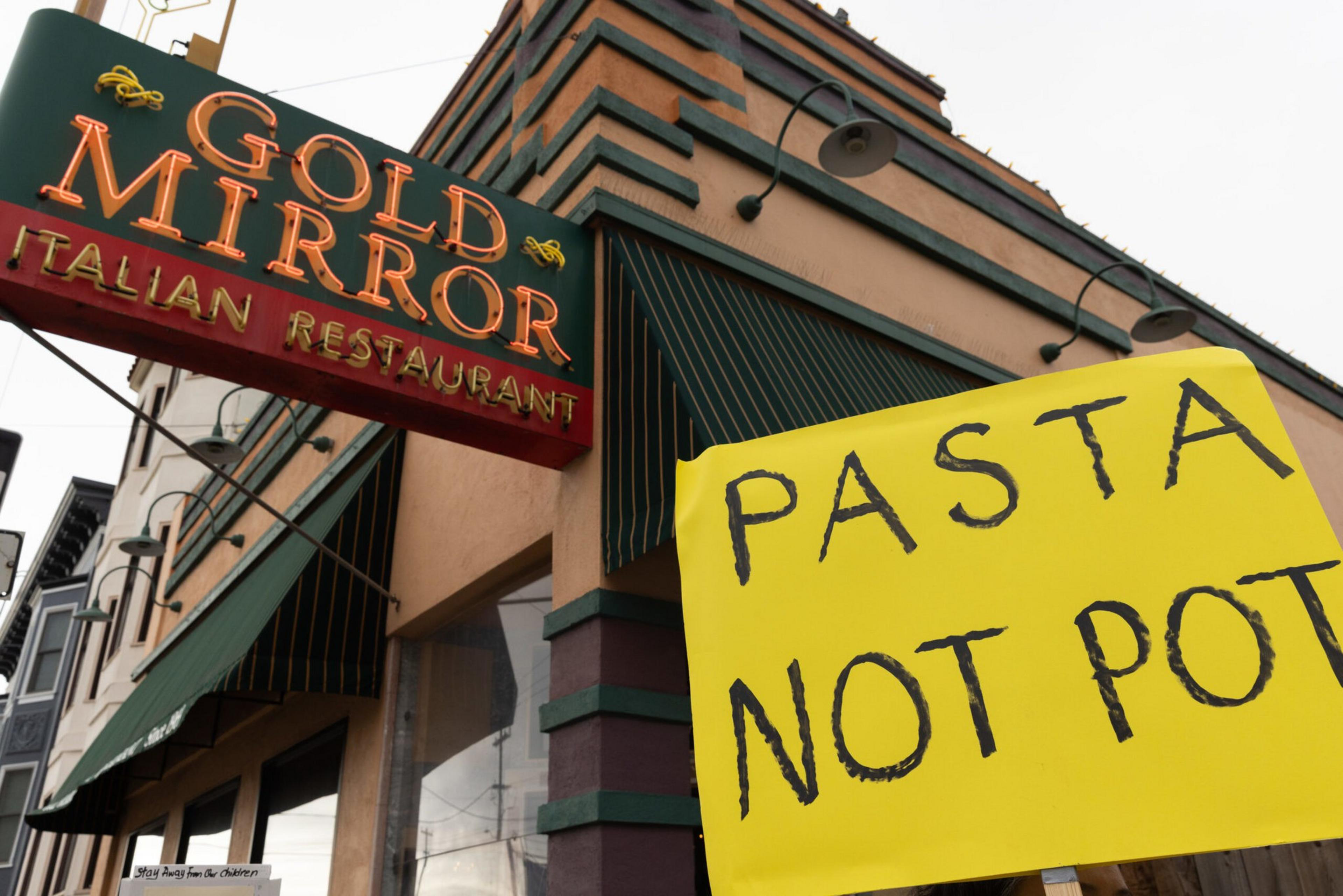
By and large, San Franciscans have brushed these protests off, regarding them as little more than chatter from a vocal minority of Asian grandmothers and grandfathers. But that community’s fight over cannabis reflects centuries of intertwining cultural, historical and political influences that are beginning to come to a head, as younger Asian Americans reach adulthood and begin to disagree with their parents’ views on substance use.
This generational shift doesn’t only affect individual consumption. Cultural and communal battles over the values and purpose of marijuana have practical effects on San Francisco’s cannabis industry, impacting everything from zoning and planning laws for pot shops to equity applicant considerations for dispensary owners.
“There’s a lot of prejudice when it comes to cannabis, and I feel like it’s just based in fear from a lot of misunderstanding,” said Angel Davis, the owner of Fig & Thistle Apothecarium and the proposed cannabis shop at Gold Mirror. “We want to have the chance to prove that it’s not a scary thing.”
After more than two hours of heated debate, the San Francisco Board of Supervisors voted 9 to 2 on Tuesday to approve the Gold Mirror expansion plan, a major defeat to San Francisco’s anti-cannabis contingent.

Want Weed? Don’t Look for It in Chinatown
Californians have been legally allowed to consume medicinal cannabis since 1996 (opens in new tab) and, after voters passed 2016’s Proposition 64, adult recreational use has been legal statewide since 2018. Nearly three-fourths (opens in new tab) of San Francisco residents voted in support of that measure.
Since then, the local cannabis community has flourished: Some 42 recreational and medicinal cannabis shops can be found throughout San Francisco, and the city even sponsors weed consumption events for major stoner holidays like 4/20.
Suffice to say, San Francisco is a very cannabis-friendly city.
But that’s not true everywhere you go. Dispensaries remain heavily clustered in SoMa, but they’re sparse in western neighborhoods. The Sunset counts just a handful of dispensaries serving its 137,000 residents.
And if you’re jonesing for a spliff in Chinatown, you’re out of luck. San Francisco’s Board of Supervisors carved out a dispensary-free zone in and around that neighborhood in 2018 (opens in new tab).

Fervent Chinese American opposition primarily explains why Chinatown and much of the Sunset became weed deserts. Over the years, proposed dispensaries in these neighborhoods consistently faced protests from members of the Chinese community, who voiced concerns about crime, gentrification and the proximity of the stores to young children.
The most highly publicized battles in the Sunset were a proposed Apothecarium shop on Noriega Street and the proposed Barbary Coast on Irving Street, both pitched in 2017.
The Apothecarium was a project co-owned by a former mayor of Oakland, Jean Quan (opens in new tab). The San Francisco Planning Commission approved it, but opponents appealed that decision to the Board of Supervisors, who shot it down (opens in new tab) due to adamant community disapproval. Barbary Coast, another dispensary now known as Sunset Pipeline, initially experienced a similar dynamic but eventually received the green light to become the first cannabis dispensary (opens in new tab) in Outer Sunset.
READ MORE: Need Weed? Here’s a Map of Cannabis Dispensaries and Lounges in SF
However, the opposition didn’t go away after California permitted adult use statewide in 2018. If anything, it crystallized.

“Chinatown, which is not only a physical place, it is also the spiritual, psychological headquarters of the Chinese American community in San Francisco and beyond,” Aaron Peskin, the supervisor representing Chinatown, said at the 2018 board meeting (opens in new tab) defending the neighborhood ban.
“I want to show that community that this city, that this lawmaking body, respects that,” Peskin added.
A New Fight on the Proximity to Schools
Now, community activists like those protesting outside Gold Mirror have their sights set on a procedural loophole that they say prohibits dispensaries near K-12 schools (opens in new tab), but nonetheless allows them next to preschools and daycare centers.
Maurice Wong, who owns a child care center across Taraval Street from Gold Mirror, questioned policies that promote cannabis but crack down on cigarette smoking, a habit still popular in many East Asian cultures (opens in new tab).
“It’s ridiculous that the cannabis dispensary can be around the preschool,” Wong said.

Though the protesters outside Gold Mirror wanted to prohibit pot sales, they say they aren’t opposed to cannabis on principle; they just want tighter regulations on where cannabis retailers can open up shop.
“There are some inconsistencies or loopholes in some of the regulations,” said Supervisor Joel Engardio, who represents the area and said he’s open to amending the law to define child care centers as schools. “We can regulate where they are positioned in the community.”
Dr. Dorothy Pang, a pediatric dentist who works across the street from Gold Mirror, opposed the upstairs dispensary but disagreed with labeling the Chinese community as anti-cannabis.
“I don’t believe that there is any racial overtone in opposing this dispensary,” she said. “It’s purely common sense as parents because of the exposure to children, regardless of race.”
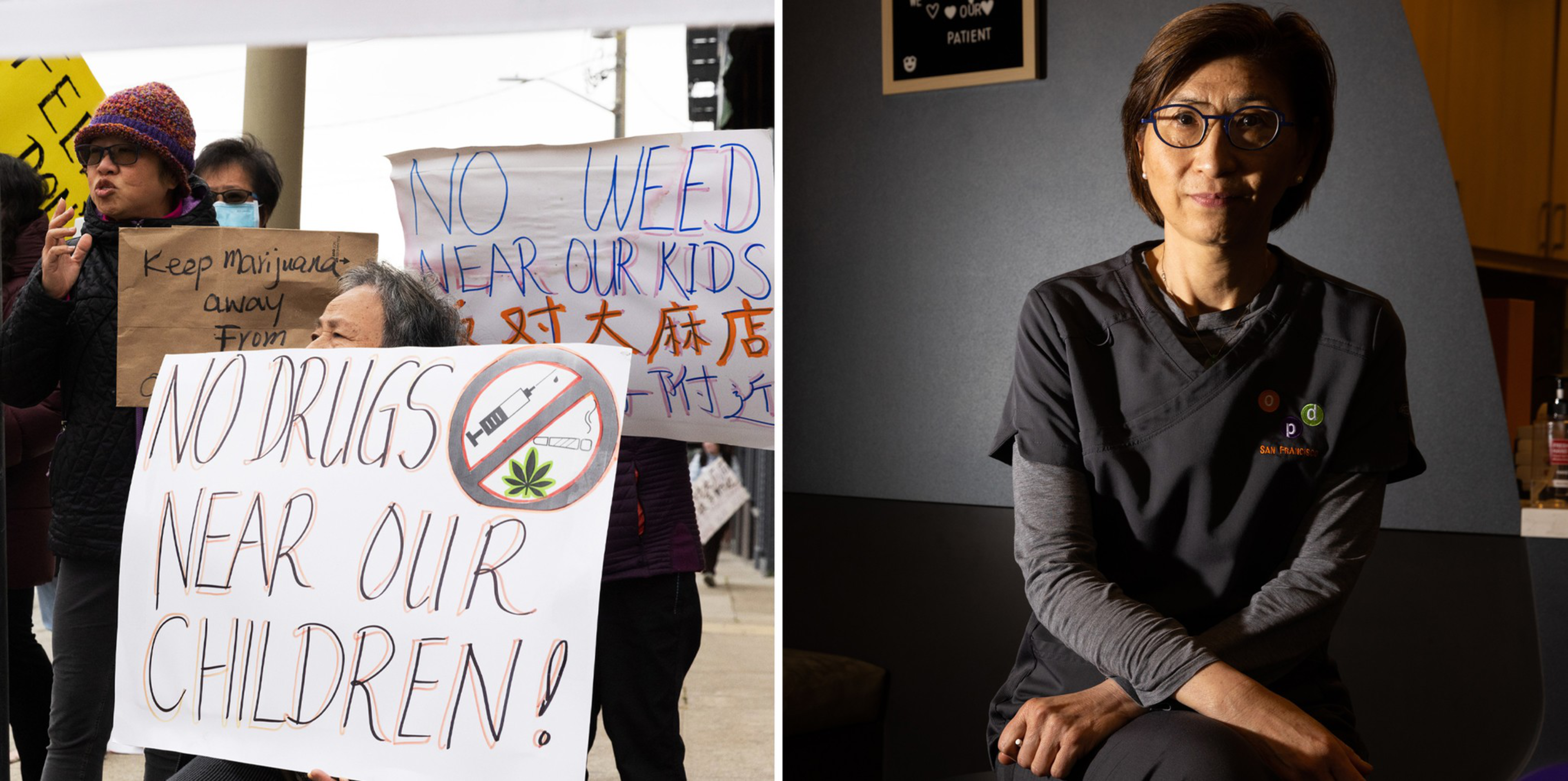
Chinatown’s opposition, along with the string of Asian-led protests against other proposed dispensaries on San Francisco’s southeast side, have nonetheless created a persistent anti-weed stereotype for Chinese San Franciscans—something that’s largely held up by experiences of many Asian Americans across the nation.
“For the Asian community, it’s about having this thing ingrained that cannabis is so bad,” said Nancy Do, a Vietnamese American who founded the San Francisco-based cannabis research lab Endo Industries. “It’s also the judgment in the Asian community, like, ‘Oh, what are they going to think of me because everyone else thinks [cannabis] is bad?’ It creates this strong influence to just reject it.”
The Big Numb
In Chinese, cannabis is called “da ma (opens in new tab) (大麻),” which means “big numb.” In some ways, the moniker is fitting: Advocates champion cannabis as a medicinal necessity that can relieve pain and reduce swelling, but anti-cannabis detractors may see the description as indicative of weed’s potential negative effects.
For thousands of years, hemp, a non-psychoactive type of cannabis (opens in new tab) that’s different from marijuana, has been an important agricultural and medicinal plant in Asia. Ancient Chinese literature (opens in new tab) frequently mentions cannabis, and local Asian American growers point out that it’s one of the core plants included in the Book of Chinese Medicine.
While acknowledging its medical benefits, some Chinese medical texts describe cannabis as harmful (opens in new tab), making use of terms like “poisonous,” “making people crazy” and “seeing ghosts.” Additionally, cannabis use in Chinese medicine mainly refers to “huo ma ren (opens in new tab) (火麻仁).” That would be the dried seeds, which famously need to be sifted out of the flower in order to roll a satisfactory joint but which are a common ingredient in Cantonese herbal tea for improving gastrointestinal functions.
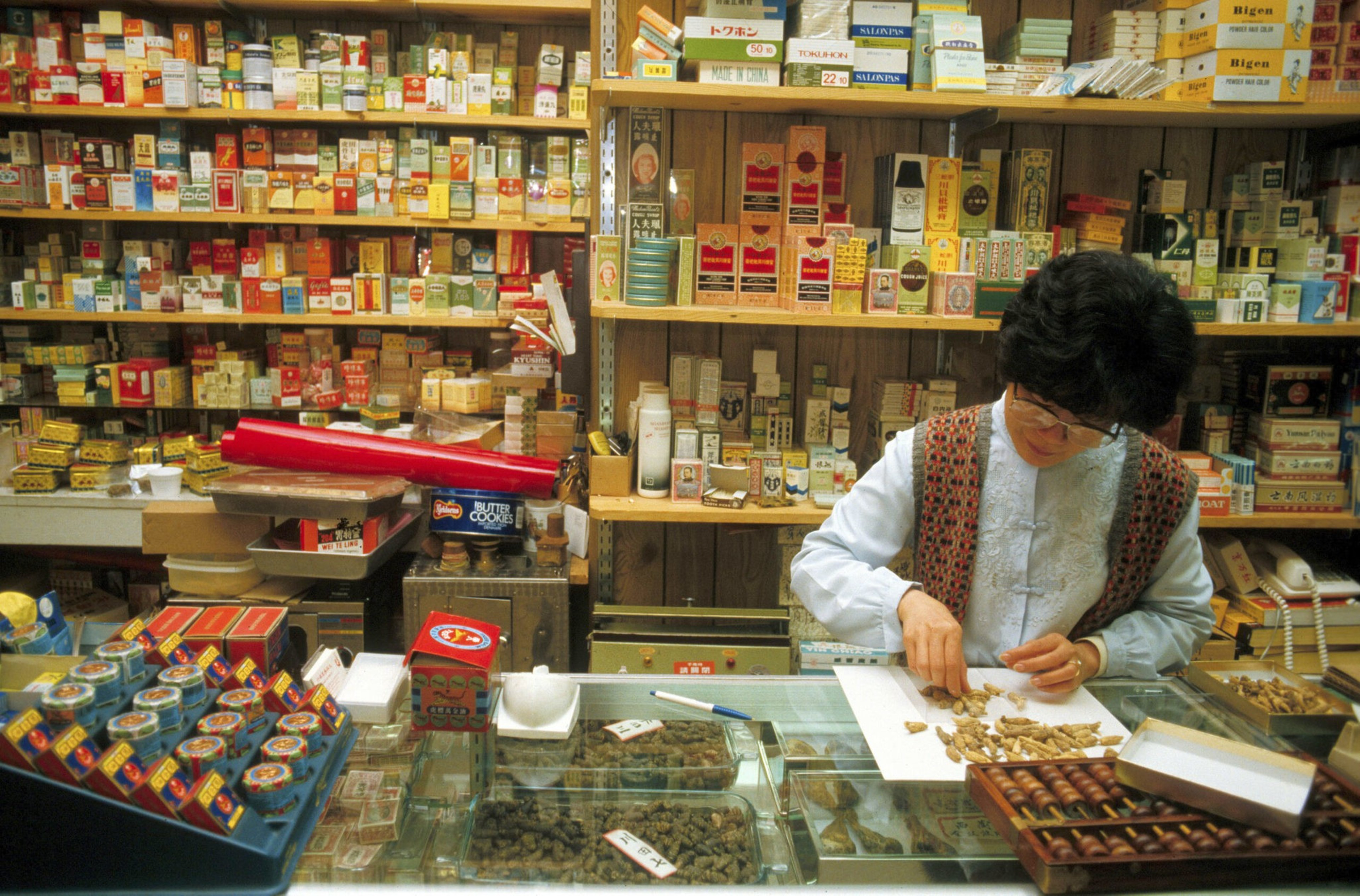
In spite of cannabis’s long history in China, modern China has some of the world’s strictest drug laws (opens in new tab), which may have influenced many people who have immigrated to the United States.
Ophelia Chong, the founder of Asian Americans for Cannabis Education, said anti-cannabis sentiment among the Chinese community stems, in part, from the Chinese government’s crackdown. Generally, cannabis is a negative word in Chinese called “du pin (毒品),” which means “poison.”
“Only in the last generation—your parents’ generation and their parents’ generation—has weed been stigmatized as a drug,” Chong said. “When you have that propaganda that’s worldwide, there’s no way you can fight it. It’s why there are so many roadblocks on safe banking and legalization.”
China has a total ban (opens in new tab) on cannabis. Celebrities who use cannabis, like Jackie Chan’s son, have been jailed (opens in new tab). As weed becomes legal worldwide, the Chinese government has doubled down on its stance, calling U.S. and Canadian legalization a “threat” (opens in new tab) in 2019.
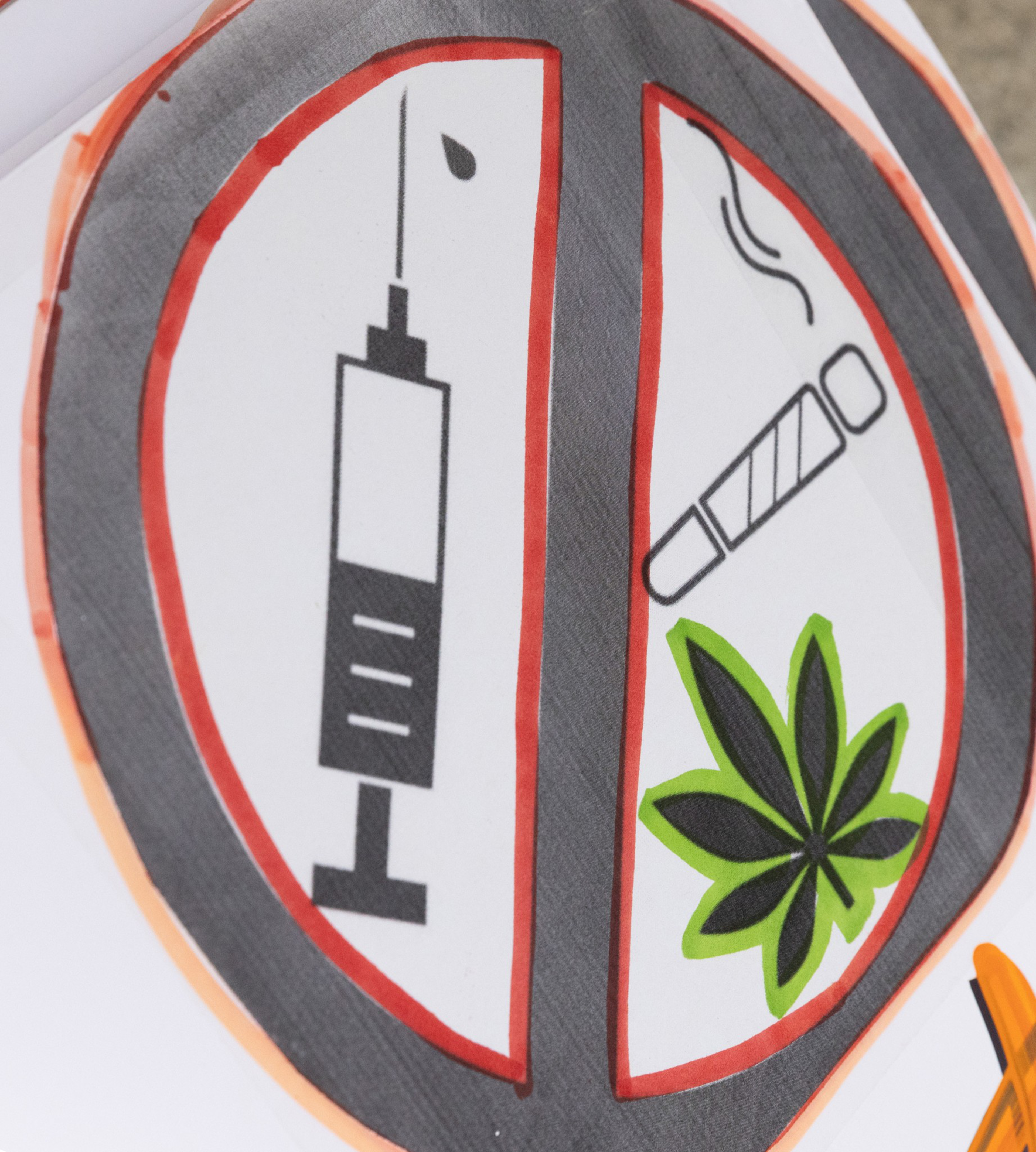
Another explanation of the stigma comes from China’s own history. The 19th century Opium Wars—in which the United Kingdom invaded China during a period of widespread opium addiction—have remained a source of national shame for the burgeoning world power. Many Chinese regard opium and most other addictive drugs as enduring threats that could weaken the country and signal a decline (opens in new tab).
But there’s an irony underlying China’s opposition to marijuana: The country has expanded cannabis cultivation efforts and is one of the largest producers (opens in new tab) of weed accessories. Globally, the black market is heavily saturated with Asian growers (opens in new tab) and distributors.
“It’s an open secret that the Asian community is very active in black market cannabis in the Bay Area,” said David Ho, a Chinese American immigrant and progressive champion of cannabis. “Socially and recreationally, the Chinese government banned the use of it—but they’re one of the most active cultivators in the world.”
Indeed, states across the West Coast report (opens in new tab) a growing Chinese involvement in illegal weed operations, where the number of Chinese-linked marijuana farms has skyrocketed. State officials said in March that investors and organized crime groups from China are fixtures (opens in new tab) in Northern California.
Culture, Community, Cannabis
This cultural baggage is not likely to go away anytime soon. It’s just that today, competing generational and cultural views on substances are coming to a head, especially for Asian American cannabis operators based in San Francisco.
“The reality is the younger generation, especially those who are a bit more acculturated—and particularly Chinese Americans—are a little bit more liberal towards their attitudes on drugs and legalization,” Ho said.
Ho opened the Sunset’s then-sole dispensary, Barbary Coast, in 2018. It wasn’t an easy process, and the approval for his shop came through only after the city decided his community ties to the neighborhood (opens in new tab) could bridge the shaky relationship between cannabis operators and Chinese community members.

“The reality is that [the protests] are somewhat authentically grassroots, but at the same time, there is a politicized faction within the city,” Ho said. “One of the rising factors in the body politics of San Francisco is what I coined the ‘Chinese Tea Party’—typically folks supported by the moderate establishment who exploit the notion or feeling of not being safe.
“They’re anti-taxes, anti-cannabis,” Ho added.
Ho says much of the protests against dispensaries and concerns about weed’s proximity to children are rooted in this more conservative view of San Francisco, one which has proven to be extremely successful in shaping local elections and, by extension, dispensary zoning policies in neighborhoods like Chinatown.
Cannabis dispensaries are required to have guards and security, for example, in large part to prevent underage children from entering and buying pot. Though the city recently promised to back even more security services, protesters against proposed pot retailers like Gold Mirror remain staunch in their opposition.
“The majority of the people that were protesting against [dispensaries] were Asian, and I think the issue is a lot of misinformation,” said David Hua, a first-generation Chinese Vietnamese American who founded cannabis software company Meadow (opens in new tab). “It was a coordinated campaign that was really fueled by ignorance and intolerance of other groups.”
‘Coming Out of the Weed Closet’
With conflicting generational, cultural and political forces at hand, Asian American involvement in cannabis is still taboo among many families. But the tide is slowly turning, and industry advocates say the first step is simple: education.
“I grew up with traditional herbal medicine, and cannabis being plant medicine really made it seem, to me, that this wasn’t a big deal,” Hua said. “It comes down to education, and it comes down to people’s experiences.”
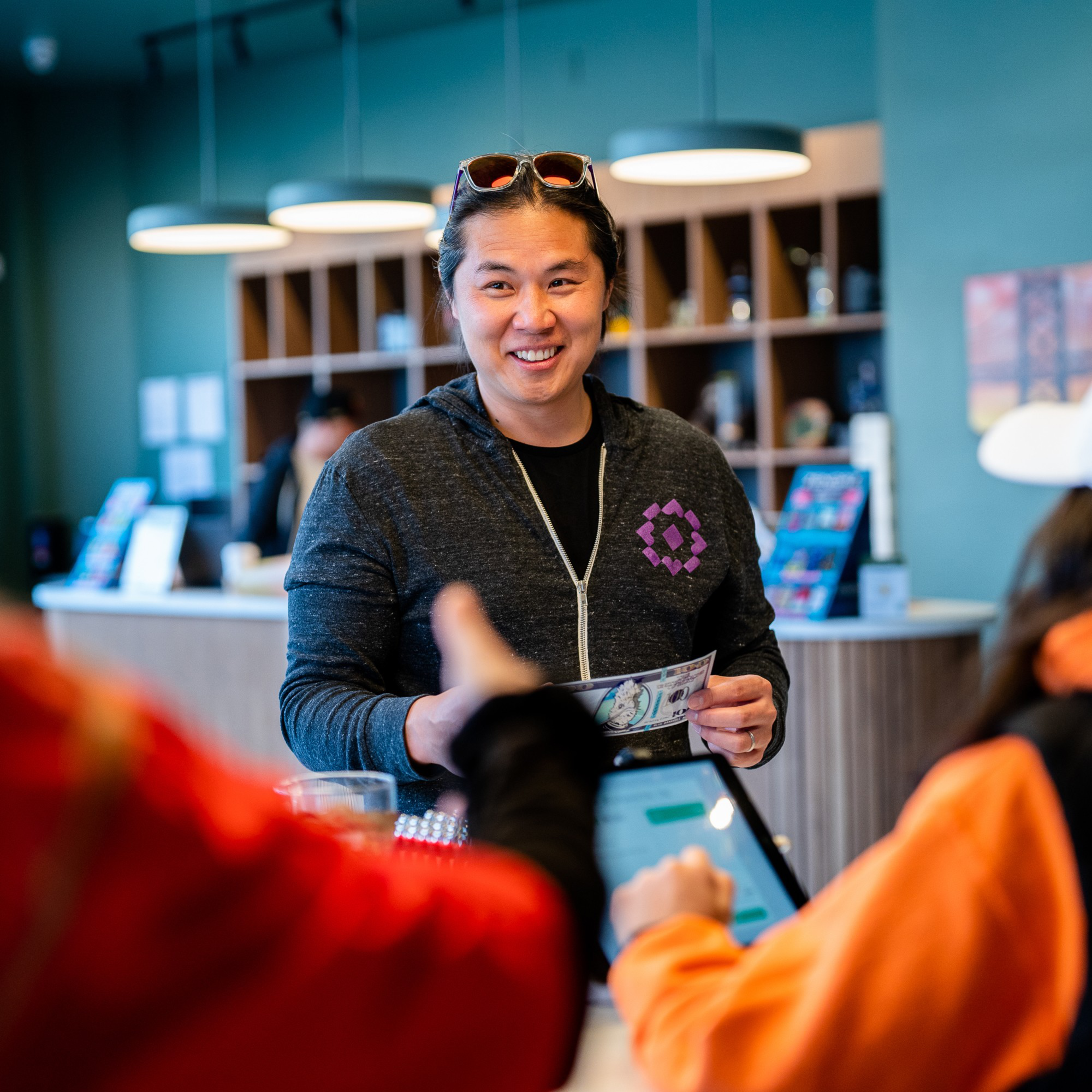
Nancy Do, the cannabis DNA researcher, echoes Hua’s views, saying that her 14 years in the industry taught her how to combat stigma through empathy—something she knows all too well. Do’s father learned about her involvement in the industry by accident, when she was incarcerated for cannabis before legalization.
“It really is a personal connection that you need to make to each person, and oftentimes, it’s just coming out of the weed closet,” Do said. “When you’re able to do that kind of interaction with people, they start to really break down their walls. You just need someone to hear these stories from a real-life person, not from the news.”
The number of Asian and Asian American cannabis operators and cannabis consumers is steadily rising in the U.S. and in San Francisco. Studies find that children of Asian immigrants (opens in new tab)—particularly those raised in the U.S.—are generally more likely to use substances like marijuana (opens in new tab). And advocates like Ophelia Chong have started groups like Asian Americans for Cannabis Education, designed to bridge the cultural gap surrounding weed.

Though the legal weed market is still in its infancy, operators say it’s only a matter of time before the stigma against the Big Numb breaks down, as the drug grows in popularity among younger generations.
“We talk a lot about people that don’t like [weed], but there are a lot of Asians that do—and, my God, I love hanging out with Asians that smoke weed,” Hua said. “We’re really proud of our heritage and try to be a good example of getting people more access to the plant.”
